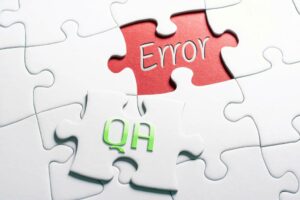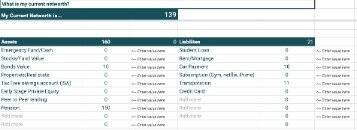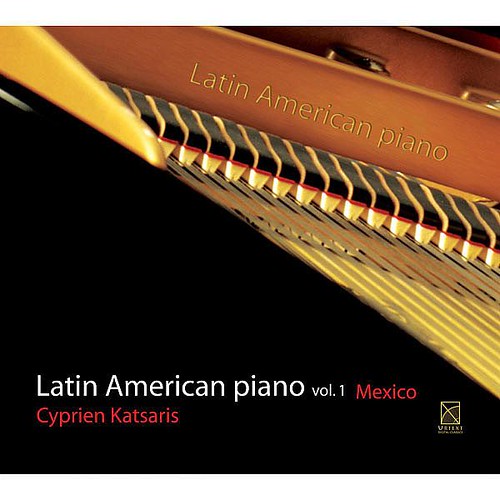Content
Their architecture is different mainly and they are different in use as MongoDB is documented based which uses collections to store the related information. PostgreSQL is used mainly when static JSON is used and data is structured for SQL storage. MongoDB is mainly used when data is unstructured and there is a need for modifying the JSON data inside the storage.
As a result, a transaction would be necessary to update every record at once. It all comes down to the type of database you’re looking for based on your unique requirements — a document database or a relational database. This is a reliable, enterprise-grade, open-source SQL database with more than three decades of history behind it.
While you decide between MongoDB vs. PostgreSQL, contact Integrate.io today for a comprehensive, 7-day demo of our services. MongoDB has the potential for ACID compliance, while Postgres has ACID compliance built-in. ACID are principles or components that work towards data validity, especially in databases intended for transactional workflows. MongoDB Atlas is a database-as-a-service offering that runs on all of the major cloud platforms .
Moreover, both PostgreSQL and MongoDB support several extensions and plugins like Adminer for database management. PostgreSQL supports extensibility in several ways, including stored functions and procedures. What makes PostgreSQL extensive is its catalog-driven operations. In the next section, we’ll elucidate the differences between MongoDB and PostgreSQL to help you make that decision easily. Our information is based on key factors like architecture, ACID compliance, extensibility, replication, security, and support to name a few.
Choosing between MongoDB and PostgreSQL
The schema contains various schema objects, including any tables, columns, keys, etc. You must structure data before loading it into such a database. While this tends to require more time, it can also put the data into a more manageable and readable format. In MongoDB, documents bring together related data and it supports multi-document transactions, which helps in connecting the source database to ACID guarantees of a relational database. This improves the performance of the database and provides flexibility, a power to document data model. Data integrity can be maintained through snapshots and transactions.
- PostgreSQL is the most popular Object-Relational Database Management System used to manage the relational database and securely store it.
- Below are a few examples of SQL statements and how they map to MongoDB.
- MongoDB, though, supports a fast, iterative development cycle so effectively due to the way in which document databases transform data into code under developer control.
- As with MySQL and alternative open-source relational databases, PostgreSQL’s efficiency has been proven in the mix of demanding use cases spanning multiple areas of industry.
- While document databases are able to do JOINs, they’re performed in a different way from multi-page SQL statements that are often needed and generated automatically by BI tools.
- You may have to check the database continuously if something doesn’t go as planned to avoid noticing a failure when it’s too late.
- In case databases need to be upgraded, PostgreSQL doubles their storage capacity.
MongoDB Atlas performs in the same way across the three biggest cloud providers, ensuring easier migration and multi-cloud deployment. With reading, you can scale-out PostgreSQL if you create replicas — though each one has to have a complete copy of the database. As MongoDB was designed to scale out, use cases needing extremely fast queries and vast amounts of data may be handled by building ever larger clusters comprising small machines.
What Is MongoDB?
A term coined for database systems (i.e. VoltDB and MemSQL) that combines the best aspects of relational databases with the efficiency and horizontal scalability of NoSQL databases. This question may be a bit obvious, but understanding why we need databases helps when it comes to choosing a database structure for your stack. Databases are a basic foundation of software development, and they serve many purposes for building projects of all sizes and types. PostgreSQL uses joins to combine data from multiple tables into a single table.

If this is your case, then you may need to sync data between them. Most high-profile MongoDB users of 1.5 years ago are no longer using it. It’s still just as young and beta-quality, but now everyone knows it. It has a reasonable security architecture and is susceptible to some security threats. Data is stored in the form of JSON whether it is Objects, Object Members, Arrays, Values and Strings. It uses JSON syntax which is very easy to use and has a wide range of browser compatibility.
Ready to get started?
This article provides a detailed evaluation of the both databases as well as highlights the key differences between them to assist you in making an informed decision between MongoDB and PostgreSQL. It also gives you a quick overview of both databases and their features. Finally, it discusses some of the difficulties you may encounter when using these databases. Continue reading to learn how to select the best database for your needs. Competition between businesses is common in today’s world, especially when they offer similar products.
In MongoDB, a replica set is used for maintaining the data set. In PostgreSQL, replication is synchronous which is also called 2-safe replication. Configure an Airbyte source MongoDB vs PostgreSQL connector to read data from MongoDB. To connect to our newly created database, copy the Connection URI and provide it as an argument to the psql CLI tool as shown below.

Developers can choose what’s essential in the application and make the changes required. MongoDB uses MQL, which can be used to work with documents in MongoDB and take out data while delivering the https://globalcloudteam.com/ flexibility and power that SQL does. Mongo RealmDB is available free of charge to all Atlas users for evaluation and light usage, enabling developers to build and release mobile applications.
Overview of MongoDB and PostgreSQL
BSON skips the keys that aren’t useful for the query, thus making it faster to retrieve data. A user could further define the document’s structure and undertake some development by introducing new fields, reworking data, or developing it whenever they see fit. MongoDB also provides you with the option of schema validation to enforce data governance controls over every collection. They end up having to bet on a choice and hope that it’s the best fit. Relational databases are great at running complex queries and data-based reporting in cases where the data structure doesn’t change frequently.

Choose from data integration methods such as ETL, ELT, ReverseETL, CDC, and more. Is a schema-free document high-performance database offering both free and paid plans. As a document database, MongoDB has a different structure and syntax than the traditional RDMS .
Query Processing
MongoDB can also accommodate use cases that require the fast execution of queries and can handle a large amount of data. Replica sets can be implemented across various data centers too, as they would come in handy in case of regional outages. This can be done by MongoDB Atlas, which makes building and configuring these clusters simpler and quicker.
PostgreSQL Is an Object Relational Database
If you really want your database to be infinitely performant and have a high computation and processing power, MongoDB is a good option. Aside from these minor distinctions, both databases are equally powerful in terms of performance and will work well with any organization, customer, or business requirement. Relationships among multiple tables in your database add value to your database’s analysis and storage capabilities. Indexes are a type of data structure that can store a small amount of information in an easily readable format. They are only one component of a join, but they make your data easier to understand and, as a result, assist you in resolving any queries.
Learn the fundamentals of relational databases and SQL without scrubbing through videos or documentation. Educative’s text-based courses are easy to skim and feature live coding environments. Image SourcePostgreSQL, also known as Postgres is a free, open-source RDBMS that emphasizes extensibility and SQL Compliance. It was developed at the University of California, Berkeley, and was first released on 8th July 1996. Instead of storing data like documents, PostgreSQL stores it as Structured objects.
For reads, it is possible to scale-out PostgreSQL by creating replicas, but each replica must contain a full copy of the database. MongoDB stores data as documents in a binary representation called BSON . Fields can vary from document to document; there is no need to declare the structure of documents to the system – documents are self-describing.
Image SourceMongoDB also offers an On-Premise pricing model with MongoDB Enterprise Advanced edition. This way, PostgreSQL can update both records at the same time, thus reducing the number of errors and maintaining a complete and accurate backup as well. It is open-source and so any user can use all of its features, free of cost. It stores files of any size easily without complicating the stack and is easy to administer in case of any failure. Integrate.io comes with out-of-the-box connectors for both MongoDB vs. PostgreSQL, helping you move data to the database of your choice without breaking a sweat. This article will take you through a comparison of the key features, functionality, and performance of each.
Like PostgreSQL, MongoDB also has a community forum that enables users to connect with several other users and get their general queries answered. The MongoDB enterprise support can further include an extensive knowledge base with use cases, detailed tutorials, technical notes on optimizations, and best practices. However, PostgreSQL’s level of security may differ from one cloud system to another, even if it’s the same database. PostgreSQL offers tons of authentication methods including a pluggable authentication module and lightweight directory access protocol , which reduce the attack surface of the servers. It also ensures server-level protection through host-based authentication and certificate authentication.
Customers include Tesla, Apple, Facebook, Deutsche Bank, NASA, and 25,000 others in 145 countries. Although schema-free, documents of the same collection often follow the same structure. Optionally impose all or part of a schema by defining a JSON schema. They typically need to be reshaped by database administrators via an intermediated process, slowing the overall flow of development. As well as its mature query planner and optimizer, PostgreSQL provides such performance optimizations as table partitioning, read query parallelization, and JIT expression compilations. As a result, migrations between multiple clouds are more complicated.
On the other hand, MongoDB allows you to store data in any structure that can be quickly accessed by indexing, no matter how deeply nested in arrays or subdocuments. On the other hand, PostgreSQL supports foreign keys as it’s SQL-compliant. By enabling foreign key constraints, PostgreSQL can stop the insertion of invalid data into foreign key columns. Since there are no tables in MongoDB, there are no foreign keys in MongoDB either; hence no foreign key constraints. However, MongoDB does have a DBRef standard which helps standardize the creation of the references.












